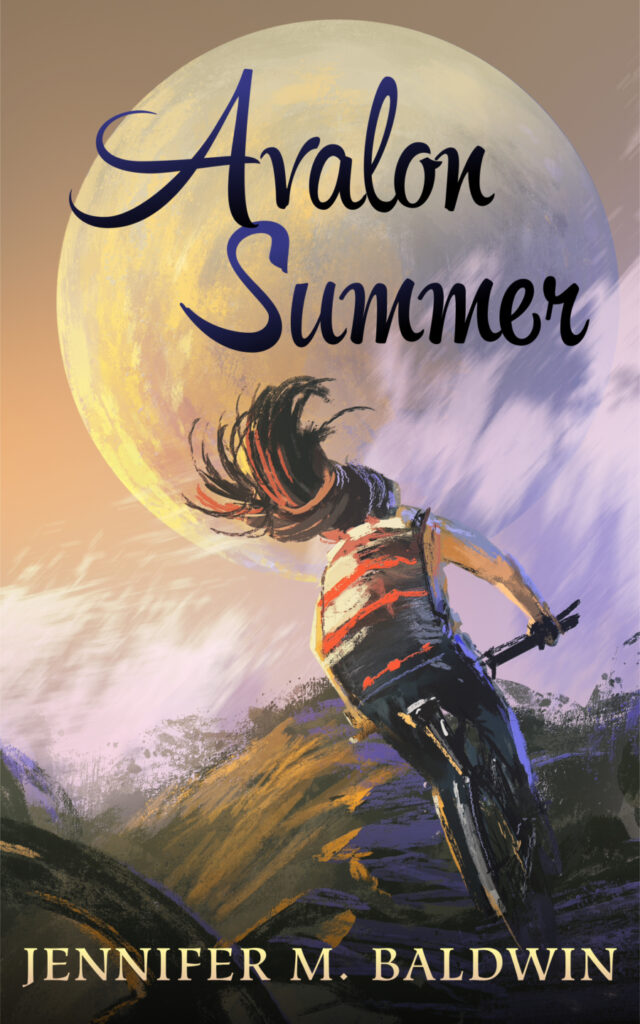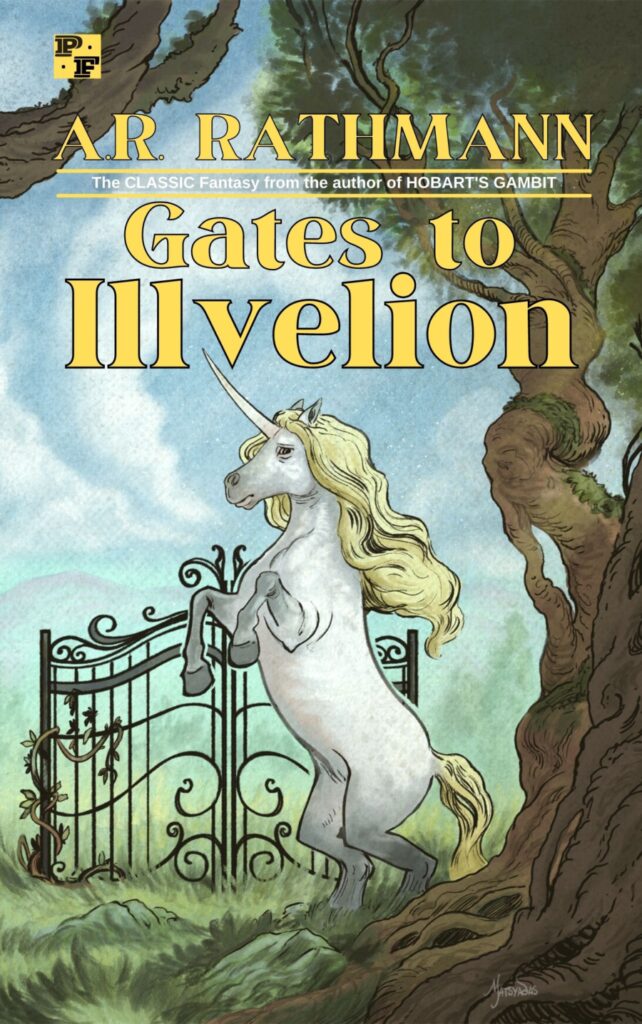 I am in the midst of reforging my relationship with fantasy literature. As a youngster, I read a lot of fantasy but fell out of the habit until I hit college. In college, I rediscovered Tolkien, C.S. Lewis, as well as myth and folklore, but it wasn’t until I read G.R.R.M.’s Game of Thrones and Patrick Rothfuss’s The Name of the Wind that I finally got back into reading fantasy that had been published within the last forty years.
I am in the midst of reforging my relationship with fantasy literature. As a youngster, I read a lot of fantasy but fell out of the habit until I hit college. In college, I rediscovered Tolkien, C.S. Lewis, as well as myth and folklore, but it wasn’t until I read G.R.R.M.’s Game of Thrones and Patrick Rothfuss’s The Name of the Wind that I finally got back into reading fantasy that had been published within the last forty years.
Since beginning this blog and restarting my writing career, I’ve been thinking a lot about fantasy as a genre and why we as readers are attracted to it. In one respect, my interest in this question is born out of insecurity. When I was a kid, fantasy lit was decidedly uncool. Being into fantasy lit was the kiss of social death, and for a girl it was even worse. “Female Geek Culture” was not a thing when I was younger. The stigma I experienced from being into “knights and stuff” has carried itself with me even into adulthood. I embrace my fantasy love now and proudly proclaim it to any who care to listen, but I’m still obsessed with legitimizing the genre. I still need my love for fantasy to be validated.
I also see trends happening in the genre that I’m not entirely sure I like. Not for any larger social/cultural reasons, but simply because my personal tastes seem to be out-of-step with some (but definitely not all) of what’s happening in the genre. To be a little less cryptic: I like my fantasy to be a little more wondrous and a little less mundane. More on that in posts to come.
For now, I want to focus on the “old school” fantasy that I experienced in the 80s and early 90s, and what that fantasy had to offer for me as a bookish kid who for some inexplicable reason had a passion for swords and dragons. Because swords and dragons (and knights, wizards, orcs, giants, castles…) are the very things I want to expound upon.
“Fantasy” as a genre is hard to pin down. On the one hand, the word evokes images of Tolkien’s Lord of the Rings, of the standard medieval-ish high fantasy that involves quests and monsters. But on the other hand, fantasy can also include a classic film like It’s a Wonderful Life. After all, It’s a Wonderful Life has “magic” in it (Clarence the angel and his ability to erase George Bailey from existence). There is no scientific or realistic explanation for how George gets erased from everyone’s lives; the angel grants George’s wish, and suddenly the film enters this alternate-universe where everything has gone terribly wrong. This is fantasy.
Fantasy can also include contemporary and urban settings — worlds where things of magic (fairies, goblins, werewolves, etc.) exist alongside contemporary things like cars, skyscrapers, and guns. This too is fantasy.
And yet, when I feel the desire to experience a “fantasy story,” I don’t gravitate towards the It’s a Wonderful Life or I Married a Witch variety of fantasy, but instead seek out the Tolkienesque. Occasionally, I’ll seek out urban fantasy, like Lost Girl or the Dresden Files. Sometimes I’ll look for wizard schools like Hogwarts, or hidden worlds like Fantastica. When I want fantasy, I go looking for dragons, not Bewitched.
What I’m proposing is this: The official definition of “fantasy” is not necessarily what fans of the genre are looking for. I would contend that what fantasy fans want is both a certain kind of feeling and a certain kind of iconography.
In other words, we want dragons and swords.
Things can stray from dragons and swords a bit, but the further they stray, the less they satisfy that pure desire for other-ness that fantasy promises. An urban fantasy can still scratch the itch for a fantasy fan because even if the hero fights with a gun, she’s still fighting red caps and giants and ghouls, and Baba Yaga lurks in the shadows of the dark, garbage-filled alleyway. But even when fantasy combines with another sub-genre, it still needs the things of fantasy. A reluctant hero may find a sword stuck in a tree or he may find a revolver hidden in a suitcase, but only one of these images holds within it the allure of fantasy.
We might complain about “too many elves” in the thousands of Tolkien-ish knockoffs that litter the fantasy shelves, but nevertheless, we still want something… elvish. Call them the Fey or the Tuatha or the Fair Folk, but we want human-like, immortal otherbeings who possess a naturalistic kind of magic and a haunting power over those of us who hail from the world of men. We might complain about “another f***ing orc,” but we still want monsters who come from the same deep recesses of human imagination as Grendel and his kin. We might gripe about the glut of fantasy that is too Euro-centric, but the heroes and creatures and monsters of ALL cultures share in the inexplicable qualities of strangeness, of mystery, of “other-ness,” that fantasy fans crave. The djinn and the leprechaun may be worlds apart, but they both spring from the same well of human imagination that seeks to conjure up something beyond the ordinary world.
This entry into something beyond the ordinary — this desire for fairies and their magic — is what I’ve been seeking lately. I want to go back to the classic tropes, to the skies filled with dragons and the dusty roads traveled by surly dwarves. I’m reading the Pern books for the first time. I’m going to be rereading The Lord of the Rings. I’m making my way through the Dark Is Rising sequence. I’ve got A Wizard of Earthsea on my to-read queue. I’m currently on the hunt for original editions of the Dragonlance Chronicles. I’m re-reading some old copies of the Lone Wolf role-playing adventure books. I finally picked up and read The Neverending Story — a book I’ve wanted to read since I was twelve.
As much as I want the fantasy genre to expand and to refresh itself (simply so that it doesn’t stagnate and calcify into something boring), I don’t want to see the classic iconography of the genre disappear either. I still want warriors on horseback, wielding swords and spears, fighting dragons and goblins in dark forests and ancient castles. The things of fantasy matter. They are the blood and guts of the genre, even if we often dress them up in different skins. These are the things I’ve been craving lately; I want dark lords and even darker crystals. I want dragons. And perhaps, most of all, I want a sword of my very own — a sword with spells woven into the blade, with powers from the otherworld, with an ancient history beyond the mists of time. A sword to vanquish a dragon, or to enchant one.

 I decided to set my series, Merlin’s Last Magic, in the 1980s because, for me, the 1980s were the “golden age” of fantasy-related stuff: Conan. Red Sonja. Labyrinth. The Dark Crystal. The Last Unicorn. The Neverending Story. Ladyhawke. Dragonslayer. Legend. The Dragonlance Chronicles. HeroQuest.
I decided to set my series, Merlin’s Last Magic, in the 1980s because, for me, the 1980s were the “golden age” of fantasy-related stuff: Conan. Red Sonja. Labyrinth. The Dark Crystal. The Last Unicorn. The Neverending Story. Ladyhawke. Dragonslayer. Legend. The Dragonlance Chronicles. HeroQuest. I’m an incredibly nostalgic person.
I’m an incredibly nostalgic person. The Lone Wolf books were perfect: Choose Your Own Adventure meets solo-RPGing.
The Lone Wolf books were perfect: Choose Your Own Adventure meets solo-RPGing. Unfortunately, in the pre-Internet age, it was hard to find many Lone Wolf books. I’m not sure I ever found more than two. Just as quickly as I had found them and loved them, I had met a dead-end.
Unfortunately, in the pre-Internet age, it was hard to find many Lone Wolf books. I’m not sure I ever found more than two. Just as quickly as I had found them and loved them, I had met a dead-end. Then I laughed almost hysterically. It was like seeing a long-lost best friend while standing in line at the DMV.
Then I laughed almost hysterically. It was like seeing a long-lost best friend while standing in line at the DMV. I started with Book 3. Every page was dripping with nostalgic memories: the map at the front, the “Action Chart,” the “Combat Results Table.” I resisted the urge to look up anything on the Internet about how to “win” the adventure. I wanted my experience to be fresh, untainted.
I started with Book 3. Every page was dripping with nostalgic memories: the map at the front, the “Action Chart,” the “Combat Results Table.” I resisted the urge to look up anything on the Internet about how to “win” the adventure. I wanted my experience to be fresh, untainted. I am in the midst of reforging my relationship with fantasy literature. As a youngster, I read a lot of fantasy but fell out of the habit until I hit college. In college, I rediscovered Tolkien, C.S. Lewis, as well as myth and folklore, but it wasn’t until I read G.R.R.M.’s Game of Thrones and Patrick Rothfuss’s The Name of the Wind that I finally got back into reading fantasy that had been published within the last forty years.
I am in the midst of reforging my relationship with fantasy literature. As a youngster, I read a lot of fantasy but fell out of the habit until I hit college. In college, I rediscovered Tolkien, C.S. Lewis, as well as myth and folklore, but it wasn’t until I read G.R.R.M.’s Game of Thrones and Patrick Rothfuss’s The Name of the Wind that I finally got back into reading fantasy that had been published within the last forty years.


